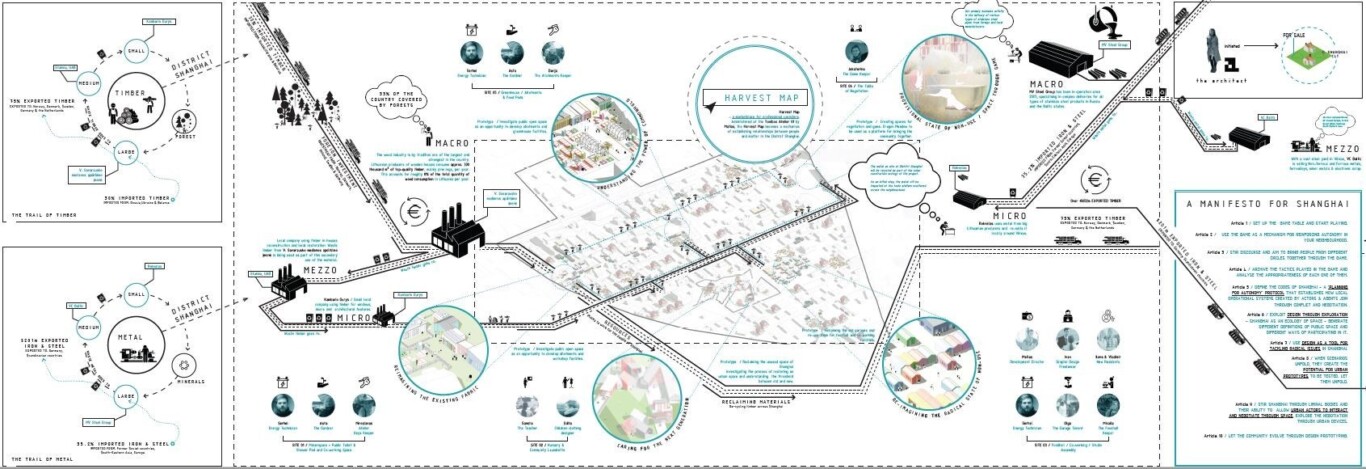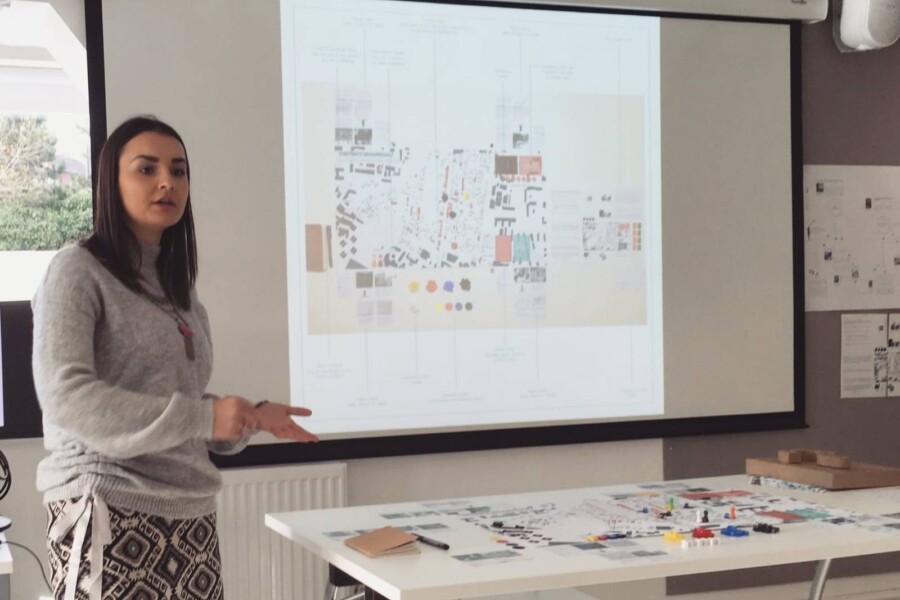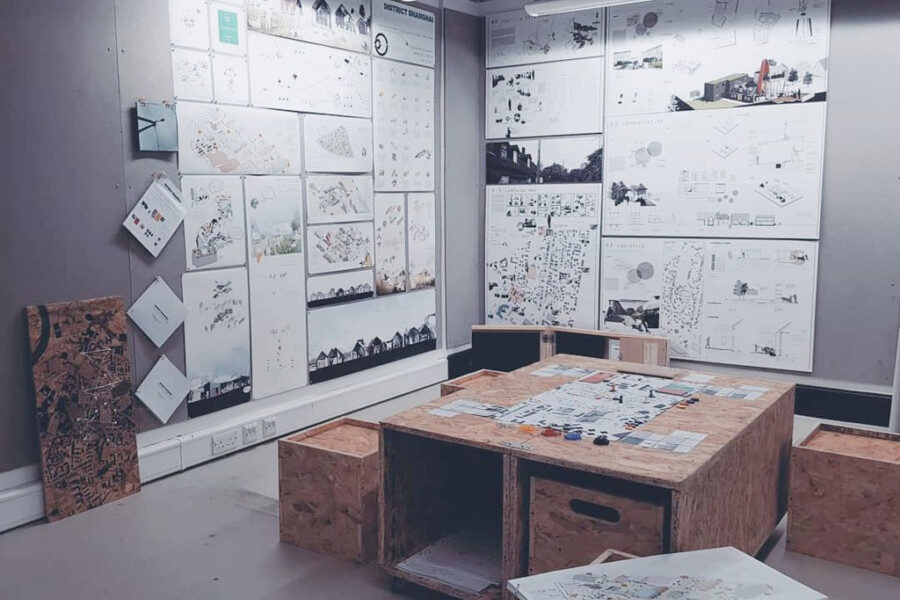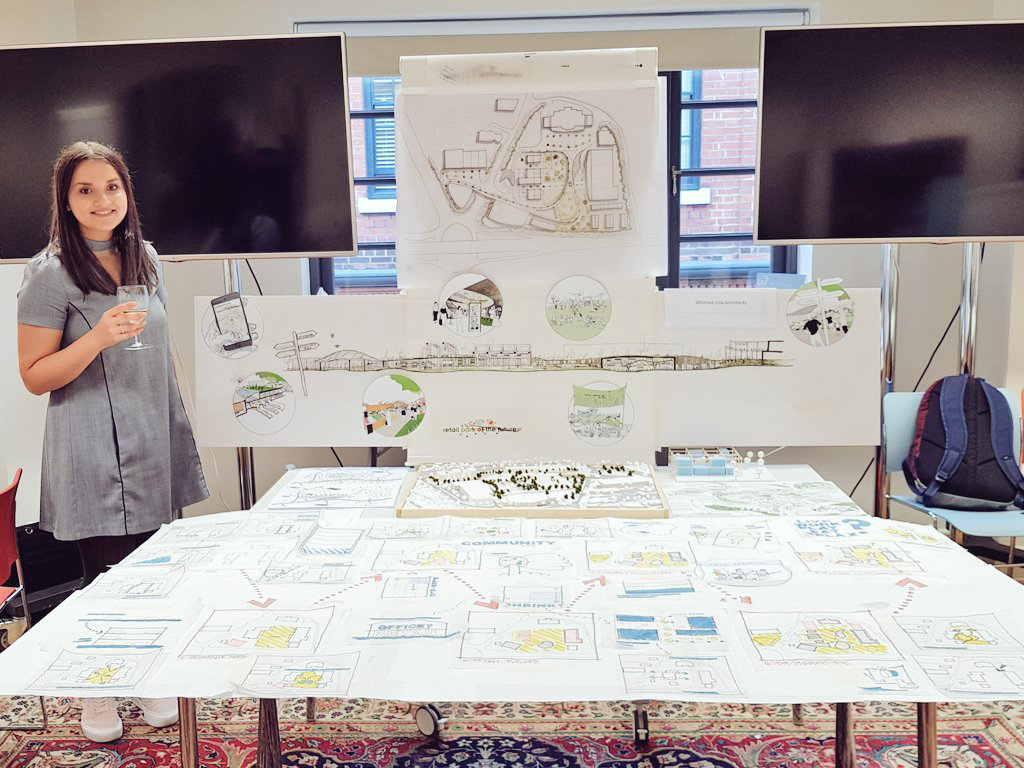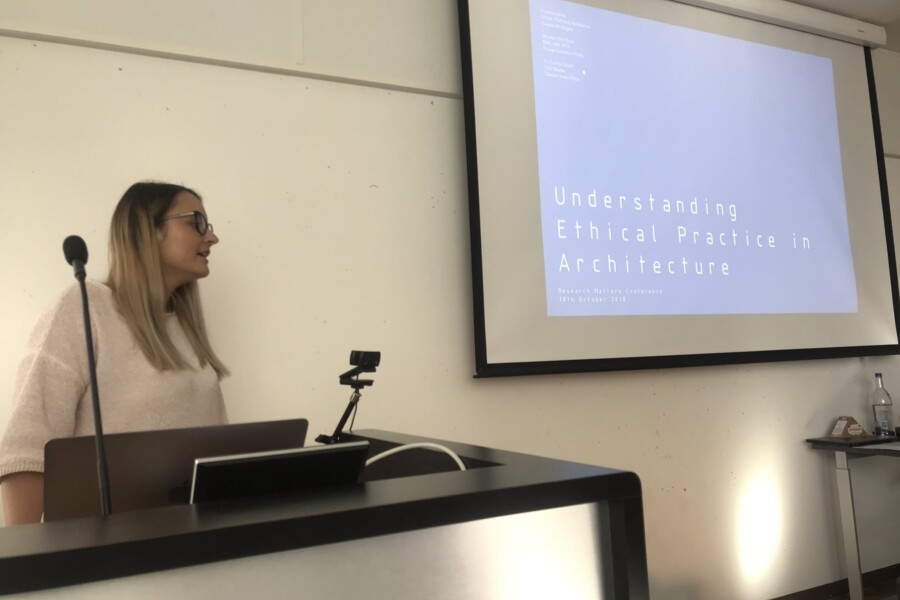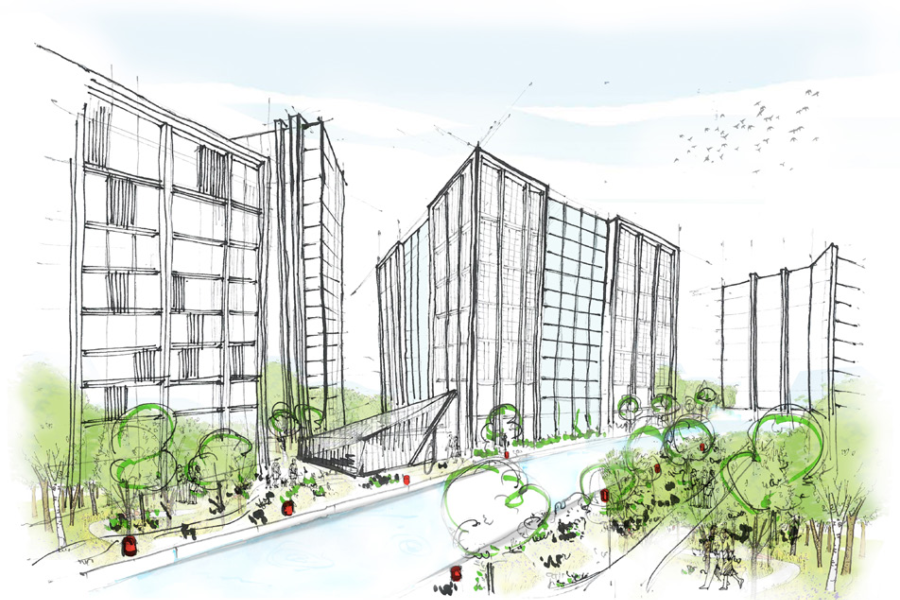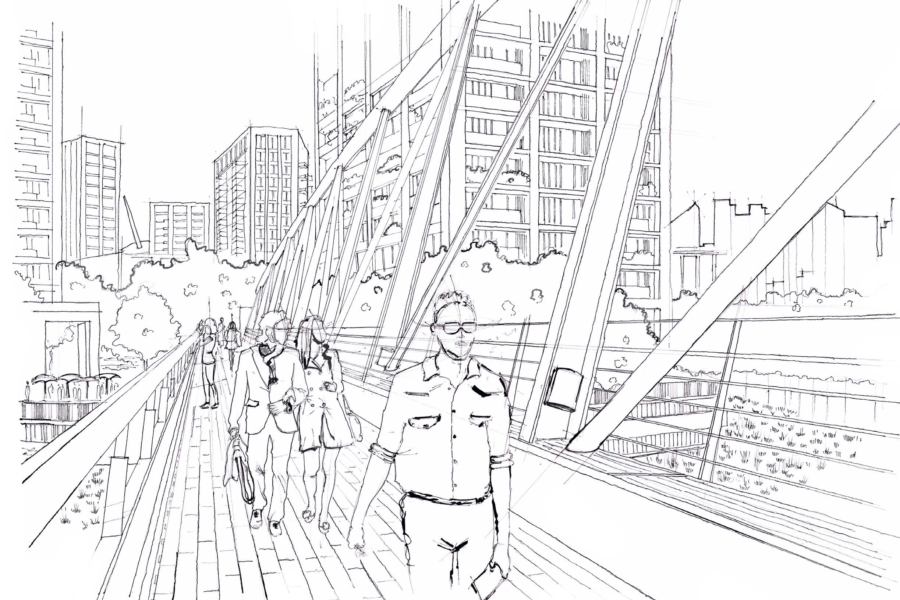
People Profile: Architect Catalina Ionita on the motivation behind her career drive and her passion for placemaking
Architect Catalina Ionita joined Chapman Taylor’s Manchester studio in April 2021, with a focus on residential projects, particularly in the Build-to-Rent and off-site sectors. She is also studying for a PhD at Sheffield Hallam University, where she tutors part-time. In this profile, Catalina tells us about the sacrifices made by her parents which helped her to pursue her career ambitions, her love of academia and her strong views about the importance of a cultural and artistic heart in successful urban placemaking.
Tell us about your background.
I am originally from Ploiești in Romania, where I grew up in the years following the fall of Communism; this was a time when a lot of families, mine included, struggled financially and had to make extraordinary sacrifices to survive. Until I was about six years old, our family was very poor; my father had to leave the country to find work when I was four years old. I didn’t see him for another three years and he didn’t return permanently until I was about 17.
My father worked in Rome for 13 years as a stage designer for major artists, and he often had to go on tour with the likes of Luciano Pavarotti for this purpose. He is very creative, thinks three-dimensionally and is naturally artistic. My mother, on the other hand, is entrepreneurial in nature; when my father had to work abroad, my mother started a grocery shop with the money my father sent home, which then evolved and grew into a profitable construction business. I learned a lot about construction, including aspects such as tectonics and materiality, as a result. After 13 years, it made financial sense for my father to come back to Romania because the business was doing so well (it is still a thriving family business today).
My parents are great role models for me, and I like to think that I have inherited some of my father’s creative ability and my mother’s business acumen! I am very proud of what they achieved through their sacrifices; I never felt that I was going without, and I was constantly encouraged by them to pursue my interests. My father, who saw me drawing as a young girl well into the night, encouraged me to pursue a career where drawing was a strong element.
From the age of 10, I attended the arts school in my home county to pursue my love of playing piano and guitar. The school offered a fascinating and diverse curriculum, which allowed me to also study drawing, composition, model making, photography and architecture, the latter of which I chose to specialise in. I completed my Romanian education at the Carmen Sylva College of Art, Music and Architecture, where I qualified as an Architectural Technician in 2011.
When did you go to the UK?
Following a university open-day fair in Bucharest involving a range of British universities, I applied to five of them and was shocked to be accepted by them all! I came to the UK in 2011 to study for my Part 1 in Architecture at Huddersfield University. I was a bookworm, feeling a strong responsibility to do well to justify the sacrifices my parents made (a sense I still have now).
I won an award every year, the highlight being when I won the Chancellor’s Prize for Outstanding Performance in Architecture; the Chancellor at the time was the actor Sir Patrick Stewart, who presented me with the award and had a chat with me, which was a great experience. I was also shortlisted for a RIBA Presidents Medal for my 6th year thesis project: “District Shanghai / A People Power Game”.
What were your subsequent career steps?
In 2014, I began working as a Part 1 Architectural Assistant at Whittam Cox Architects, and I continued working there as a Part 2 Architectural Assistant after they offered to sponsor me to undertake a part-time master’s degree in Architecture at Sheffield Hallam University. At Whittam Cox, I worked on a wide range of projects, primarily at RIBA Work Stages 0-3, including residential, mixed-use and urban-scale schemes; Build-to-Rent was a prominent area of my work. I also collaborated on a winning design competition for “Future Retail Destinations”, organised by the Architects Journal and The Crown Estate.
In 2018, I spent a summer working on a research proposal on the topic of “Reimagined objects of architecture in Venice” at the Venice Architecture Biennale, based at the British Council Pavilion. This research was then exhibited at the RIBA North West “After Island” exhibition in Liverpool; the whole process was a fantastic and illuminating experience for me. I also won an architectural scholarship to produce research on architecture in post-Communist Romania, which then led to another research study, for the RIBA, on “Ethics and sustainability in architecture”. Realising that I have a love for academic life and a passion for pursuing research, I applied for a PhD position at Sheffield Hallam.
I moved to Coda Studios in 2018 Manchester to enable me to study for my Part 3. I worked there for two years on a wide range of large residential projects, masterplan competitions, office-to-residential conversions and listed buildings restorations. I worked on a mix of project stages, with a lot of delivery projects; my arts-focused education naturally lends itself more to the early concept and design development stages of projects, but I found that I enjoyed the technical side of the later stages.
In 2020, I was included on the RIBA’s Rising Stars shortlist for my work as Project Architect on Coda’s Oughtibridge Mill housing project near Sheffield, as well as for my research work, particularly in the area of architectural ethics and sustainability (which is a key focus of new programmes developed by the RIBA). This was a great honour for me.
Tell us about your PhD research on artist-led urban placemaking.
My PhD research, which builds collaboratively on research by Sheffield Hallam and East Street Arts (a Leeds-based artist-led organisation), is focused on the role of artist-led spaces as what I call “urban activators” in the UK. My thesis explores the argument that successful and sustainable placemaking requires more than just a mix of retail, residential and commercial uses; there is a crucial role for the arts in this regard, which has not been greatly explored in the UK context.
Activist art organisations often lease and occupy derelict properties in deprived neighbourhoods and regenerate them, establishing artist residency projects where the resident artists can use the property and, in return, work for and with the community. There are international precedents where designers and developers collaborated with artists successfully, creating a strong sense of community identity; the artists created the heart for those schemes.
It has been shown that these interventions help to regenerate the wider area and even lead to house price increases. In my thesis, I make the case for artist-led urban regeneration in the UK, particularly in the context of dense urban areas with diverse populations.
I am halfway through the PhD at the moment, so I don’t have all the answers, but I passionately believe that art and culture can, and should, be a central component in urban placemaking strategies. These collaborative community efforts can help to instil a sense of soul in a place, as well as an enduring legacy.
As a PhD student, I also tutor MArch students every Friday during the academic terms. I had to train for the position, which means I am now an Associate Fellow in Higher Education. To be honest, I did not know if I would enjoy tutoring, but I do. Some of my fellow tutors used to be my tutors, which was a bit strange, at first!
The COVID-19 pandemic lockdown periods were very challenging because tutoring had to be conducted online, but my students proved themselves to be resilient and adaptable; I am very happy to be tutoring in person again now. My students nominated me for an “Inspirational Teacher” award, which was very gratifying, and touching, for me.
Why did you join Chapman Taylor?
When I was in college in Romania, I visited Bucharest and remember being struck by the architecture of one particular office building; it was modern, dynamic and interesting, whereas the dominant Communist-era architecture was dull. I found the building to be inspiring and wondered who designed it; when I looked it up, it was Chapman Taylor!
I was happy to work at my previous practice, Coda, to gain technical experience, but I am a very social person and I always knew that I would need to work at a larger firm where I could collaborate with lots of people; those interactions and the synergy created by different viewpoints and ideas coming together are what make for the best designs.
My partner (Architect) Antonio (Serban) already worked at Chapman Taylor’s Manchester studio, and I already knew (Architect) Alex Esfahani from when we worked together previously, so I knew that the company would be perfect for me. I approached them to see if there was a space for me there and was invited to interview; soon afterwards, I was offered a position, for which I was very grateful.
What have you been working on since joining?
I have worked on some feasibility and capacity studies, but my main focus has been on Suburban Build-to-Rent (SBtR) projects, on which I have been working as part of our residential team with (Director) Michael Swiszczowski.
SBtR provides the chance to offer more, and higher-quality, space for families and more multi-generational amenities than its more tightly site-confined urban counterparts, and so it ties in very nicely with aspects of my research and my passion for placemaking; our client for one major SBtR project on which I am currently working is very interested in creating the right social heart and sense of place for the scheme, which is gratifying for me.
SBtR is an excellent format for realising some of the ideas I have talked about in my research in relation to sustainable and context-led placemaking, including the possibility of a curated, artist-led approach, so I am very much enjoying my work. I believe that the SBtR model offers great opportunities and potential benefits for developers, operators, local authorities and residents, and that it could well transform the way in which we think about the nature of residential life.
Where do you want to be in five years?
Hopefully, I will have finished my PhD by then! I aspire to develop myself as both an established architect and engaged academic who succeeds in finding a complementing dialogue between these two areas of interest. I strongly believe that the society needs more professionals who can facilitate a better transition between academia and practice and who can offer support in finding a more suitable model of exploring the field of architecture for a contemporary society and all its challenges. Hopefully, one day I can be that individual who inspired someone to pursue architecture.
In terms of my career at Chapman Taylor, I want to go as far as I can go; I am quite ambitious for myself, which is partly due to my sense of wanting to ensure that my parents’ sacrifices were well worth it.
I really enjoy being at Chapman Taylor – I like the team and the collaborative ethos, as well as the great opportunities on offer to me here; I would like to be part of the future leadership of the company in years to come, and to be a thought leader in relation to placemaking. One step at a time!

